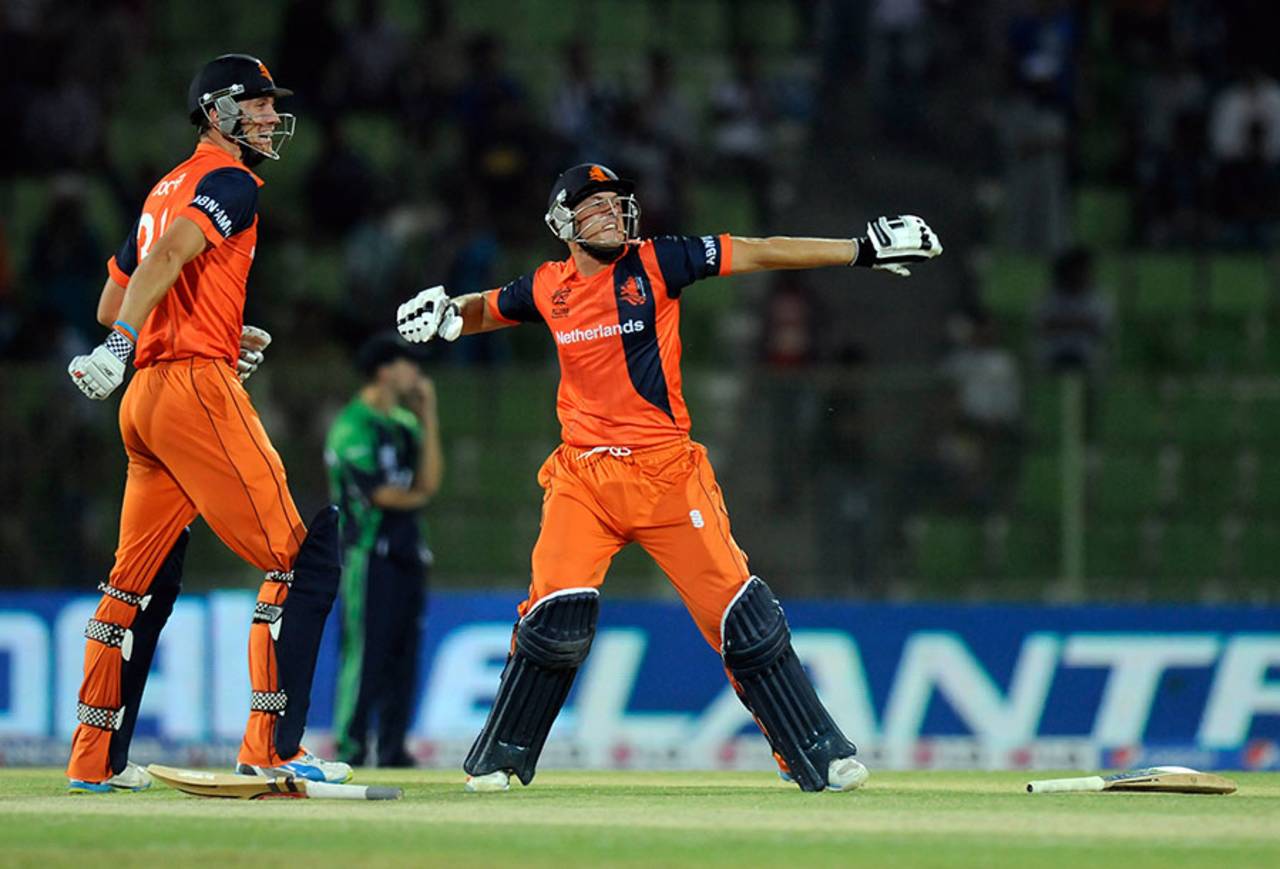When Mike Brearley went to Alderney to interview
John Arlott for the BBC soon after the great commentator's retirement, Arlott confided that his favourite part of the game was the batting collapse. He loved the way that it arrived out of nowhere. He relished its suddenness and the overwhelming implications that it brought to the state of the match.
Many fates are caught up in a batting collapse. They are a brutal reminder of the fragility of the game. As a poet, a man who appreciated cadence, Arlott savoured their thrilling rhythm.
Any follower of English cricket is well acquainted with them, of course. They are a brand of collective madness in which uncertainty leaps from one mind to another with a strange kind of psychic connectivity. It's easy to tie the mental state of a batting collapse to something that Daniel Kahneman, in his book Thinking Fast And Slow, called the Availability Heuristic: our perceptions of what is happening are usually guided by the most easily recalled piece of information. If that information is overwhelmingly present - in the faces of the despondent batsmen trooping from the crease, the jubilant opposition, the jittery dressing room - then it becomes almost unignorable, whatever counter-arguments your experience and talent might advance.
T20 cricket is too short for the genuine batting collapse. It lacks the context of the longer game, and the format demands that a batsman place less value on his wicket anyway. But watching Netherlands defeat Ireland in that jaw-dropping spat
in Sylhet the other day, we might have seen an early example of the
bowling collapse, a phenomenon that the T20 game is uniquely geared to produce.
We have seen individual bowlers get the yips in the longer forms, and it's unnerving in its combination of comedy and tragedy. But there's always the chance for the skipper to hide the poor sap in the field for a while and turn to an experienced man who will steady the ship. There's no equivalent of the collective failure that would echo the batting collapse.
Yet as the Dutch unleashed all hell on Ireland's bowlers, none were able to halt the onslaught. Of the 13.5 overs delivered, eight went for ten runs or more, and three of those went for over 20. Of the other six, four went for nine runs each. Put another way, only two of the 13.5 cost less than 1.5 runs per ball.
This pain was spread. George Dockrell, who began the tournament as one of the format's most economical spin bowlers, sent down three overs for 43. Tim Murtagh, a seamer of great experience, paid for his 3.5 overs with 47. Cusack (pace), Stirling (spin) and McBrine (spin) sent down a combined four overs for 70. The now-infamous first six Powerplay overs, which cost a world-record 91, were delivered by five different bowlers. Every bowler was hit for at least one six; Dockrell was struck for four in a row, while Cusack and McBrine were each dispatched for three consecutive maximums.
In this context, Kevin O'Brien's three overs, which went for 29, were the equivalent of the bewildered non-striking batsman who leans on his bat and watches the wickets go down at the other end.
The nature of a collapse is that it affects everyone involved in it. It is collective, and it seems to be obeying its own internal momentum. It is being inspired by the opposition, but it also leaves the collapsing side unable to arrest the slide. It's somehow contagious. Ireland and Netherlands provided another essential criterion: they were well matched - collapse carries less emotion and less shock value if one team is clearly and historically superior.
Although Netherlands then affected a batting collapse in their
first group game, Sri Lanka were certainly superior opposition, and in its way that collapse was quotidian.
The T20 format, with its mindset and its resources tilted in favour of the bat, seems to allow more for the possibility of a bowling attack coming under siege and subsiding to the onslaught; plans destroyed, heads scrambled, unable, as Ireland found, to deliver anything other than the kind of smackable delivery that the batsman is somehow demanding. It will still be rare and remarkable, but the bowling collapse is a phenomenon that may visit us more often.
Jon Hotten blogs here and tweets here

